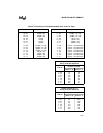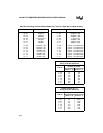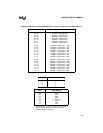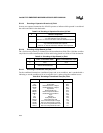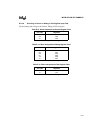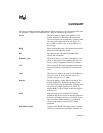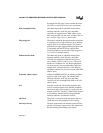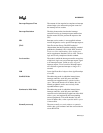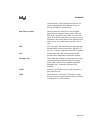
Glossary-1
GLOSSARY
This glossary defines acronyms, abbreviations, and terms that have special meaning in this man-
ual. (Chapter 1, GUIDE TO THIS MANUAL, discusses notational conventions.)
Assert The act of making a signal active (enabled). The
polarity (high/low) is defined by the signal name.
Active-low signals are designated by a pound symbol
(#) suffix; active-high signals have no suffix. To
assert RD# is to drive it low; to assert HLDA is to
drive it high.
BIOS Basic input/output system. The interface between the
hardware and the operating system.
BIU Bus interface unit. The internal peripheral that
controls the external bus.
Boundary-scan The term boundary-scan refers to the ability to scan
(observe) the signals at the boundary (the pins) of a
device. A major component of the JTAG standard.
CSU Chip-select unit. The internal peripheral that selects
an external memory device during an external bus
cycle.
Clear The term clear refers to the value of a bit or the act of
giving it a value. If a bit is clear, its value is “0”;
clearing a bit gives it a “0” value.
Deassert The act of making a signal inactive (disabled). The
polarity (high/low) is defined by the signal name.
Active-low signals are designated by a pound symbol
(#) suffix; active-high signals have no suffix. To
deassert RD# is to drive it high; to deassert HLDA is
to drive it low.
DMA Direct memory access controller. The internal
peripheral that allows external or internal peripherals
to transfer information directly to or from the system.
The two-channel DMA controller is an enhanced
version of the industry-standard 8237A DMA
peripheral.
DOS Address Space Addresses 0H–03FFH. The internal timers, interrupt
controller, serial I/O ports, and DMA controller can



